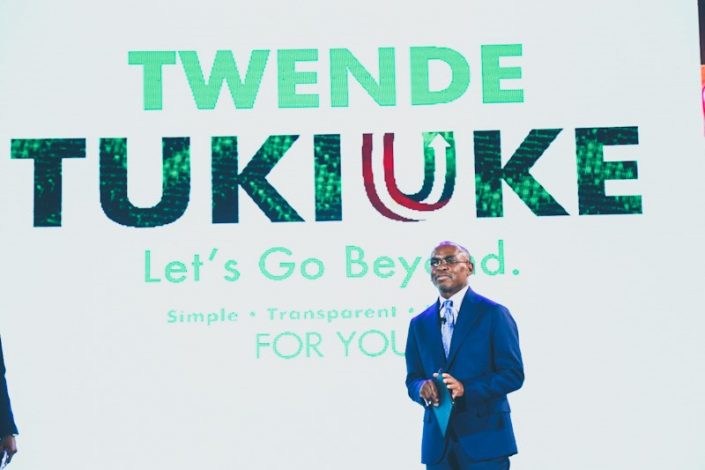In 1999 the company was licensed to operate as a telecommunications services provider. Safaricom officially launched in October of 2000 with Vodafone owning 40% of Telkom Kenya.
In 2002, it was converted into a public company with the government owning 60%. It made revenue of Ksh 9 billion in revenue and introduced the KShs 100 scratch card.
The year 2003 set the pace for driving penetration into the mass market with the launch of Simu ya Jamii and per-second billing. These initiatives saw the company end the year with a 55.4% market share.
The year 2004 saw Telkom exclusivity with Safaricom end. Safaricom reached the 2 million subscribers’ milestone and introduced mobile internet leading to a growth in its market share to 59.2%. 2005 saw the launch of Sambaza, a feature that allows subscribers to send airtime to each other. They also launch call back service known as “Please Call Me”.
The revolutionary M-PESA was launched in 2007. This is also the year that Safaricom hit 7 million subscribers. 2008 was a year of yet another significant milestone as the company did an IPO(Initial public offering) at the Nairobi Securities Exchange raising KES 50bn in the process. The company’s revenue stood at KES 61bn while the customer number was 10 million.
In 2009 Safaricom reached a high of 79.1% market share and M-PESA became interoperable with commercial banks. 2010 saw the appointment of the transformative CEO, the late Bob Collymore. Mobile termination rates reduction was also implemented.
In 2012 Safaricom partnered with CBA, a commercial bank to launch the first mobile lending and saving product on mobile money globally called Mshwari.
In 2013 businesses could accept payments from their customers using Lipa Na M-Pesa. This increased cashless collection of several institutions such as Kenya Power, hospitals, schools and many SMEs.
In 2014, the company launched Spark fund to sparkle innovation.
2015 saw the relocation of M-PESA servers from Germany to Kenya and the Launch of KCB M-PESA another mobile lending and saving product in collaboration with a commercial bank, KCB in this case.
In 2017 Safaricom had 28 million subscribers, made KES 224 billion in revenue and launched Safaricom Home Fibre.
2018 is the year the company started to aggressively launch new products and services across key value chains in Kenya. The company launched Masoko, DigiFarm and M-PESA Global.
In 2019, the company launched Fuliza, the first overdraft facility globally on mobile money account.
In 2020 the company has launched ‘Pochi la Biashara’ (micro SME wallet that links to a personal M-PESA line. It helps individuals separate business from personal money, sell airtime and manage their businesses. The company has also launched a unified USSD for M-PESA that aggregates USSD codes into one *334#.
20 years down the line, the company now has 38 million individual customers whose lives it is transforming through various products and services and over 200,000 businesses on its M-PESA for business platform. The number of M-PESA agents stood at 215,367 as at 30th September 2020. Safaricom continues to power different sectors of the Kenyan economy and we are blessed to have it.
READ




